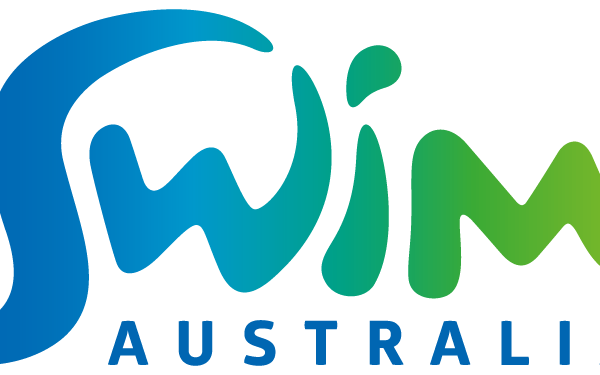Ireland took two ‘European Junior Champion’ titles in the European Junior Lifesaving Championships, which took place in Riccione, Italy from 6th-8th September. The Championships simulate real life rescue situations that Lifeguards can expect to encounter as Lifesavers and pits the best Junior Lifesavers from around Europe against each other in a series of gruelling water rescue scenarios.
Taking Gold in her event, the Board Race, Lily Barrett from Clare, typifying the split-second reactions necessary for Lifeguards to react in rescue scenarios, made a commanding start in launching her rescue board, paddled the course strongly and finished with a dominant beach run to cross the finish line ahead of some of the fittest junior lifesavers competing on the European circuit today.
Lily also teamed up with Roisin Cahill (also from Clare) to take home two Gold medals for the Board Rescue event, in which one member of the team swims to a buoy, signals (“to be rescued”), and waits to be picked up by the second member of the team on her board. They both paddled powerfully to shore and crossed the finish line on the beach with the board to become European Junior Champions.
A European silver medal was secured by Eoghan Grady (from Mayo) in the “Run-Swim-Run” event in which his strong beach run was followed by a fast swim around marker buoys and back to shore for a second beach run to the finish line for an extremely close finish.
These outstanding performances were complimented by a series of excellent results from the Irish Junior Lifesaving Team overall:
Results Including County of Competitor (event descriptions below):
Board Race:
Lily Barrett (Clare): 1st (European Junior Champion)
Ayesha Garvey (Donegal): 14th
Adam McEvoy (Clare): 10th
Board Rescue:
Lily Barrett (Clare) & Roisin Cahill (Clare): 1st (European Junior Champions)
Adam McEvoy (Clare) & Rory McEvoy (Clare): 4th
Run- Swim – Run:
Lily Barrett (Clare): 4th
Ayesha Garvey (Clare): 14th
Katie Shannon (Clare): 18th
Eoghan Grady (Mayo): 2nd
Rory McEvoy (Clare): 6th
Hugh Mc Mahon (Clare): 14th
Flags
Adam Mc Evoy (Clare): 8th
Cameron Steel (Wexford): 13th
Rescue Tube Rescue
Ciara Gleeson, Ayesha Garvey, Katie Shannon & Lily Barrett: 8th
Hugh McMahon (Clare), Cameron Steel (Wexford), Adam McEvoy (Clare),Eoghan Grady (Mayo): 10th
Lifesaving sport is primarily intended to encourage lifesavers to develop, maintain and improve the essential physical and mental skills needed to save lives in the aquatic environment. Lifesaving competitions consist of a variety of competitions to further develop and demonstrate lifesaving skills, fitness and motivation. Children around Ireland as young as eight can get involved in a series of progressive Lifesaving classes taught by Irish Water Safety, through the www.iws.ie website and hopefully go on to represent their country in these competitions.
Media Enquiries:
Irish Water Safety, The Long Walk, Galway. LoCall: 1890.420.202 / Tel: 091-56.44.00 / www.iws.ie
Mobiles: John Leech 087-6789600 / Roger Sweeney: 087-6789601
The sport of Lifesaving:
- Life Saving Sport is recognised as an Olympic Category two Sport and it is recognised by the International Olympic Committee and the World Sports Federation.
- The sport is controlled by International Lifesaving (ILS) Sport and this organisation is recognised by IOC as the controlling body for the sport worldwide. There are over one hundred countries registered as members of ILS.
- Within Europe the sport is controlled by International Lifesaving Sport Europe a subsidiary body of ILS.
- Irish Water Safety is recognised by both bodies as the National Governing Body for the sport in Ireland.
- Irish Water Safety has organised the sport in Ireland since 1946. His Excellency President Sean T. O’Ceallaigh presented the Presidents Award to IWS in 1950 for competition between the counties of Ireland and it is competed for every year since then.
- ILS, ILSE and IWS all subscribe to WADA.
- The sport holds European and World Championships in addition to National Championships,
- A Sports Commission manages the sport within IWS. Participation in competitions has been part funded by Irish Sports Council and IWS funding.
- Life Saving Sport is quite distinct in that the disciplines in which people compete are directly related to elements of lifeguarding,
Event descriptions:
Manikin Relay: Four competitors in turn carry a manikin approximately 25m each.
Medley Relay: With a dive start on an acoustic signal, the first competitor swims 50m freestyle without fins.
With a dive start after the first competitor touches the wall, the second competitor swims 50m Freestyle with fins.
With a dive start after the second competitor touches the wall, the third competitor swims 50m freestyle towing a rescue tube. The third competitor touches the turning edge.
The fourth competitor is in the water wearing fins with at least one hand on the turning edge or starting block. The fourth competitor takes the harness of the rescue tube and the third competitor to a fourth competitor in the water wearing fins with at least one hand on the turning edge or starting block. The third competitor, playing the role of “victim,” holds the rescue tube with both hands, while being towed 50m by the fourth competitor to the finish.
Line Throw: In this timed event, the competitor throws an unweighted line to a fellow team member located in the water located 12m distant and pulls this “victim” back to the finish edge of the pool.
Surf Race: With a running start into the surf from the start line on the beach, competitors swim around the 400m course designated by buoys, returning to shore to finish between the finish flags on the beach.
Board Race: Competitors stand on or behind the start line on the beach with their boards 1.5m apart. At the start signal, competitors enter the water, launch their boards, and paddle the course marked by buoys, return to the beach, and run to cross the finish line.
Ski Race: On the starting signal, competitors paddle their skis around the course marked by buoys and return to finish when any part of the ski crosses the in-water finish line – ridden, gripped, or carried by the competitor.
Oceanman: Competitors cover a 1200m course that includes a swim leg, a board leg, a ski leg, and a beach sprint finish.
Board Rescue: In this event, 1 member of the team swims approximately 120m to a designated buoy, signals, and waits to be picked up by the second member of the team on a board. They both paddle to shore and cross the finish line on the beach with the board.
Tube Rescue: Four competitors from each team participate in this event: a “victim,” one rescue tube swimmer, and two rescuers. The victim swims approximately 120 m to a designated buoy, signals, and waits to be rescued by the rescue tube swimmer. As they return to shore, the remaining two rescuers enter the water to assist. The event finishes when the first competitor in a team crosses the finish line while in contact with the victim.
Taplin: Teams of 4 competitors (1 swimmer, 1 board paddler, 1 surf ski paddler, and 1 runner) cover the course in a sequence of legs determined by draw at the start of each competition.
Flags: From a prone starting position on the beach, competitors rise, turn and race to obtain a baton (beach flag) buried upright in the sand approximately 20m away. Since there are always fewer batons than competitors, those who fail to obtain a baton are eliminated.
Run Swim Run: From the start line, competitors run to pass around the turning flag and enter the water to swim out to and around the buoys. Competitors swim back to the beach to again run round the turning flag before running to the finish line.



